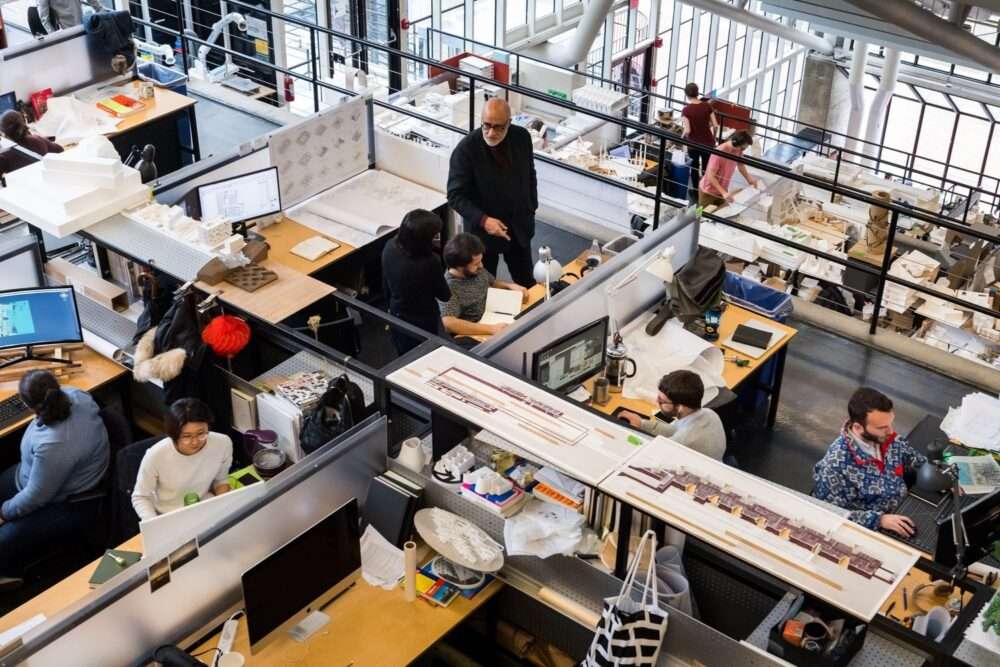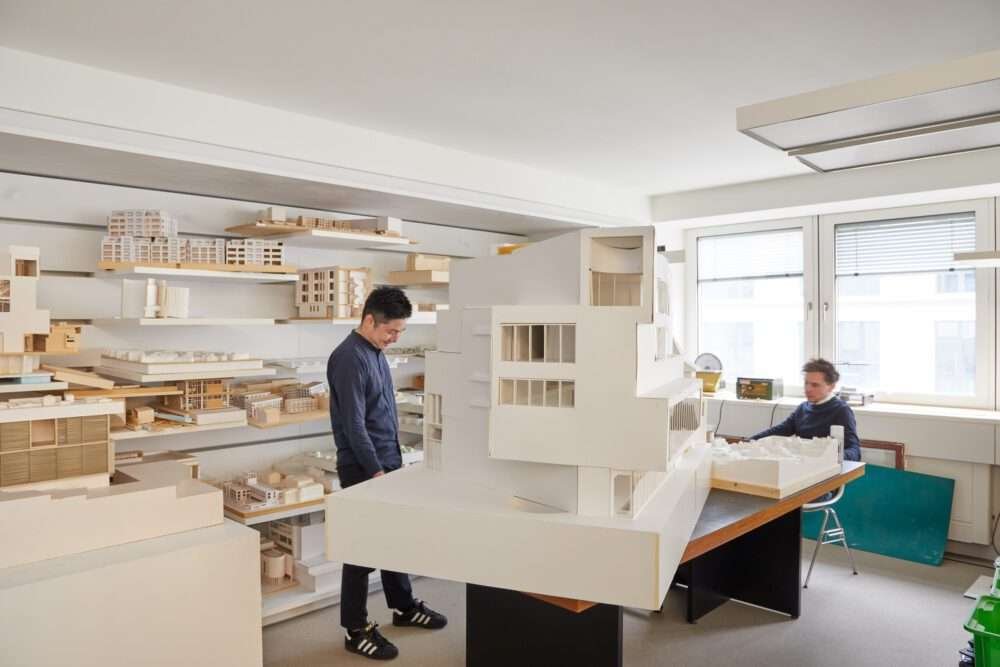Most architects can relate to feeling steeped in a deep devotion to architecture.
What starts as a dream career becomes a nightmare for many.
After a rigorous education, experiencing a turbulent career journey can discourage professionals.
Long hours and disparate wages are widely discussed in Twitter threads and LinkedIn posts, with not many solutions.
Architects are in a constant struggle between profession and passion, juxtaposing love and despair.
Perhaps, at the root of these problems is the colloquial definition of the name “architect”.
Harvard graduates Jake Rodin and Erin Pellegrino found themselves in a similar situation many years ago.
After successful career paths, they soon became interested in exploring the value of their skills outside the architecture profession.
The duo soon discovered that their knowledge made them invaluable in different roles,
and they started the professional consulting firm Out of Architecture.
Their book shares the same title, lays out the idea of a “crisis of names” and outlines ways in which architects can benefit from their design education.

Name crisis
The School of Architecture and the Profession attracts a wide range of interdisciplinary,
self-focused and curious individuals.
Through their education and industry experience, these multi-talented professionals are instructed in the traditional means and methods of architectural practice.
She was named by the name “architect”, a word that can have only one meaning – designer of buildings.
As with any artistic endeavor, architectural education sees the most passionate students,
who push through the long nights, physical and mental exhaustion of working on a project they love.
After many years of education and practice, architects stick to their identity and profession.
They may not be able to see alternative uses for their skills or feel beholden to the hours they pour into their “calling”.

Many architects prefer to have a specialized focus in their career such as sustainability analysis,
design technology, or 3D visualization.
Architectural firms and licensing requirements continue to force these professionals to a single “name,
” requiring them to meet a strict set of attributes.
Rather than letting their proven skills and experience define their work,
dedicated professionals in the workplace are identified with the “architect”.
Architects seem to be in an individual breed when their design education prepares
them for multiple career options ranging from technological development to fashion design to corporate consulting.
The crisis of the name results from identification with an unspoken rule of what an architect should be.
It arises from the fact that architects never learn about other “names” by which they can identify themselves.
The title of “architect” comes with certain limitations, which are determined equally by industry and profession.
There is a traditional expectation of what architects can and should do.
The legal requirements around professional licensing and certification intended to protect the trade only reinforce the strict definition of what an architect appears to be capable of. j
“The crisis of a name is as much an existential question for the profession as it is for the individual,” Pellegrino shares.
Over the years, architects have lost agency in the built environment through structures modified to project contracts.
One way to reclaim this agency is to realize that the architect’s skills in the past and today are different.

Definition of an architect
The flexibility of an architect’s way of thinking is often recognized but no less valuable.
And with an incredibly versatile skill set that translates well in any field,
These critical thinkers are capable of solving many human problems.
Architects are incredibly adept at looking at and problematizing a situation.
Their design process is rooted in learning and relearning – whether about a site, client, place, materials or even gravity.
This problem-solving prowess can be applied to many contexts outside of the built environment.
Buildings need not be in the architect’s definition.
In a world where the buzzwords “innovation” and “disruption” are what society rewards most,
Architects are trained to identify problems and strategize solutions that fit the specific context.
Architects as a whole have very strong technical and creative abilities.
Empathy, presentation, communication skills, systemic thinking, and visual analysis are also some of the transferrable professional qualities.
The thought process in which architects are rooted makes them suitable candidates for many positions outside of capitalist architecture.
Rather than the ‘architect’ reinventing the name,
a change in the perception around its associations could open up new horizons for the exercise of this expertise,
whether in relation to the built environment or not.
Viewing the architect’s talents through the lens of interdisciplinarity opens doors of opportunity.

Professionals may use a diverse design approach in their traditional role to differentiate themselves and produce innovative work.
Instead, they can transcend disciplines with similar tasks to rediscover meaning and value in their careers.
Erin and Jake urge their clients to treat their careers as a design problem,
giving them their first opportunity to contextualize their learned abilities.
“Architects are problem solvers and learners of the highest order,” Rodin said. ”
They are not only problem solvers but problem seekers,” Erin continues.
“I think this comes from an attitude of being modeled as an idealist, who wants to change the world to make it better.”
For more architectural news


 العربية
العربية